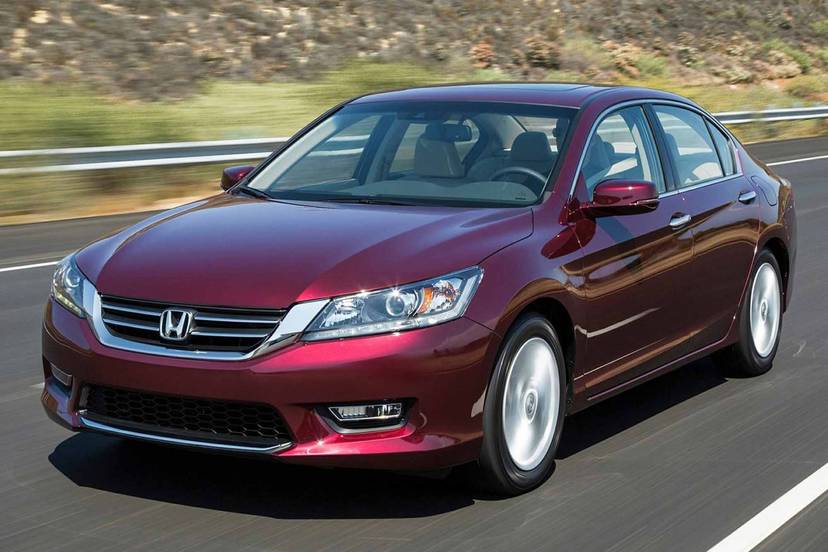
Editor’s note: This review was written in November 2010 about the 2010 Honda Fit. Little of substance has changed with this year’s model. To see what’s new for 2011, click here, or check out a side-by-side comparison of the two model years.
Honda’s Fit does something not a lot of small cars can do: It acts like a larger car than its subcompact exterior suggests.
The enviable cargo and passenger space makes this hatchback a replacement for bigger sedans. Compared with its subcompact competitors, the Fit has a healthy dose of personality; on top of being able to haul a lot of goods, it’s also fun to drive.
The fun factor may not appeal to everyone, as some of the characteristics that make the Fit sporty also mean it’s not always pleasant to deal with. Its fuel economy rating, though — as high as 28/35 mpg city/highway — should appeal to anyone.
The Fit is available in two trim levels, base and Sport, which you can compare here. I tested an uplevel Fit Sport with the optional navigation system and electronic stability control. For a look at what’s changed on the current generation — the Fit was redesigned for 2009 — see our review of the changes here.
Interior & Cargo Space
One of the reasons the Fit is so versatile and spacious is its hatchback body style. It offers the same passenger volume as a Civic sedan — 91 cubic feet — but with significantly more maximum cargo room once the rear seat is folded down.
With 20.6 cubic feet of cargo space behind the second row, we easily fit a tall suitcase inside, standing up with room to spare. That’s a lot of space with the backseat in place compared with the Scion xD’s 10.5 cubic feet, the Nissan Cube’s 11.4 cubic feet and the Fit’s newest competitor, the Ford Fiesta and its 15.4 cubic feet. We also stashed two golf bags in the cargo area without folding any seats down and still had room for two more to stack on top.
Not only does the rear seat fold down, creating a flat load floor, but also the cushions actually fold up, too. When the cushions are in their upright position, there’s room from the lowest section of the floor to the top of the ceiling, allowing you to stash tall objects.
Utility is great, but that’s not all the Fit offers on the inside. Its interior is built with high-quality materials that have the fit and finish of a more expensive car. Nissan’s Versa has generous room like the Fit, but it lacks the quality feeling. I didn’t find the Fit’s quality flawless, though: The flimsy climate controls didn’t feel up to par with the rest of the interior.
Ride & Handling
The Fit is one of the sportier options in the segment. Throw it into a corner, and the Fit stays planted and level. It seems to ask to be thrown into the next corner even more aggressively. Conversely, the ride can be harsh over rough roads, producing jarring hits on potholes and highway expansion joints. I tried my best to avoid anything that would unsettle the car at highway speeds, which basically included anything larger than a quarter.
Also at highway speeds, the Fit felt uneasy in the high winds of a storm I drove through. It wandered back and forth on the road, thrown around by the wind.
Off the highway, the Fit handled suburbia and city driving well thanks to its maneuverability and how easy it is to park.
If you test-drive a Fit Sport and find its ride quality poor, be on the lookout for a non-Sport model, which may have a more forgiving ride. The base Fit gets 15-inch wheels and tires with taller sidewalls than the Sport’s low-profile 16s. Downgrading to the base, however, means you lose cruise control and the electronic stability system.
The Little Engine That Tries Really, Really Hard
The 117-horsepower, 1.5-liter four-cylinder does an OK job moving the Fit. It’s a noisy, rev-happy engine that feels appropriate for a sporty little car. If you’re afraid to put the pedal to the floor, though, the Fit may feel underpowered. I frequently had to bury the pedal to pass or merge on the highway.
While cruising at highway speeds, the Fit didn’t like to maintain a steady pace; I had to play with the throttle to keep up with traffic. Other Cars.com editors noticed this inconvenience as well. The problem is easily avoidable using the Sport’s standard cruise control, but base models don’t offer it.
If you need a small car to travel long distances on highways, you’ll want to check out the 2011 Fiesta, which feels more comfortable there. Not only does it track better, but the Fiesta also seems to let less road and wind noise inside.
Though all Fits use the same engine, gas mileage varies by transmission and trim level. The Sport model we tested with an automatic transmission is rated 27/33 mpg city/highway. In a Cars.com mileage challenge in which we pit the Fit against the xD, Cube and Fiesta, the Fit returned an overall average of 33.48 mpg during a day of mostly highway driving. For complete results, see here.
Features & Options
The Fit starts at $14,900. It comes with numerous standard features, including air conditioning, power windows, a tilt/telescoping steering wheel, power door locks, and a trip computer with a mileage indicator. The Versa hatchback starts at $13,400, which makes the Fit seem expensive, but other hatches with similar standard equipment, like the Fiesta and xD, start at $15,120 and $15,045, respectively.
The Sport model, which starts at $16,410, adds 16-inch wheels, cruise control, paddle shifters for the automatic transmission and a security system. There aren’t many individual options, just another trim level dubbed Fit Sport with Navigation that adds a navigation system with USB iPod integration for $18,260 with standard manual transmission.
Even in its highest trim level, the Fit’s windshield wipers have so few intervals that driving in the rain was an annoyance. It’s fine for downpours or drizzle, but anything in between left me wanting more choices.
Safety
The Fit has numerous standard safety features, but one missing piece is a standard electronic stability system. To get stability control, buyers have to choose the Fit Sport with Navigation. The Fiesta and xD make stability control standard even on their least-expensive trim levels.
Tying a safety feature to a convenience option seems unnecessary. For a list of standard safety equipment, see here.
Fit in the Market
It seems hatchbacks have grown more popular in recent years. I specifically like hatchbacks because, their looks aside, they’re able to fit 10 pounds of stuff into a five-pound package. The Fit is one of the best at that.
The Fiesta is hot on its heels with climbing sales, and rightfully so. Like the Fit, it’s an excellent overall package. Shoppers should consider these two small hatchbacks the cream of the crop. Choose the Fit Sport for its spacious passenger and cargo room, but look elsewhere if you need a comfortable, quiet ride.














































